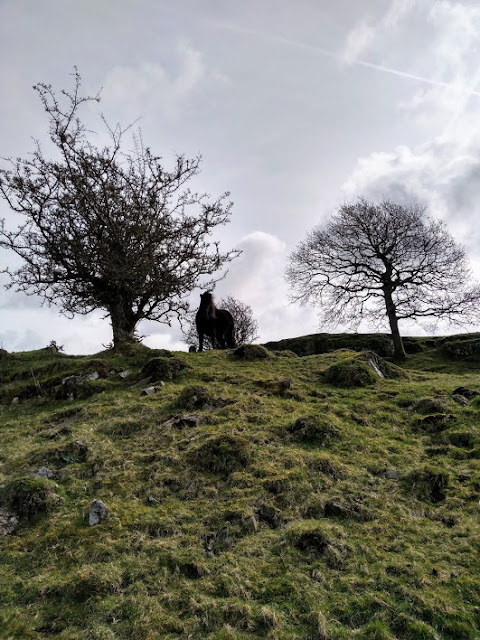This is shaping up to be the Year of Stripes.
It's not been intentional, but when you are:
a) trying to make a significant dent in your stash and you have many, many rogue, single skeins to use up and
b) you are part of a
Knitting Season Club that is actively encouraging the use of stripe creativity and
c) you fall in love with a striped jumper from the above said club. . .
. . . well, it's inevitable that stripes are going to become part of your daily knitting life.
My first finished project of the year was this Japanese inspired
Judoka bag from an issue of Pom Pom magazine. It's essentially a whole lot of garter stitch stripes sewn up in an interesting way to form this shape. I probably should have knitted it at a looser gauge to give it more drape, but it's become a useful project bag.
Next up was a mystery shawl KAL. The pattern is
Ice Cloud by Carol Feller, a lovely striped shawl that incorporated some lace along with the garter stripes and also used mohair. I started with that vivid yellow that you can see in the photo below, but it was too bright for me, so I did a stash dive and came up with some muted mauve to balance it out.
It's difficult to photograph as it's quite long and narrow, but I really like this shawl/scarf shape - it's extremely easy and cozy to wear. Unexpectedly, with this project I learned more about colour value than striping, but the latter definitely made it fun to knit and kept my interest piqued.


At the end of last year, I was extremely honoured to be chosen to test knit this next jumper - the
Dathan Pullover by
Kate Davies, part of her Knitting Season club. We were set the challenge of using all fifteen colours of her Milarrochy Tweed in a stripe sequence where each stripe could be no wider than three rows, unless it was the hem or neck ribbing. I started out trying to colour block with a single row of a contrast colour in between and it just looked awful, so I frogged it and started over. What I ended up doing was a three stripe sequence using most of the colours, until I got to the increases for the arms (the jumper is knit bottom up). I then kept the same colour sequence but switched to two rows of each. When I picked up for the long sleeve cuffs which are knit in the round, I switched to single rows separating each darker colour with the two lightest ones.


I'm not sure it entirely works and for my own personal tastes, if I were to knit it again, I'd add far fewer colours and separate them with more of the lighter shades, to achieve a similar look found on the sleeves. But it was a really interesting exercise and it's been fascinating to see all the different versions, given the same restrictions. In knitting this, I have found myself admiring certain colour combinations that I never thought would go together well - which is very useful for future projects as I absolutely love this yarn! Kate even suggested you could number all the shades and pick them out of a hat randomly, along with a 1, 2, or 3 to indicate the row width.
I was far more random with my choice when it came to knitting her accompanying
Dathan Hap.
Mine was more of a half-hap - I added more increases on the sides to create less of a deep triangle. And my only stipulation was to use up left-over balls from previous projects, including the jumper. In this stripe sequence, I love that the reds are more dominant.
I then fell in love with Kate's next pattern from the club - her gorgeous
Strodie jumper. Here the stripes are created by welts. I used a cone of Jamieson and Smith's Shetland 2ply jumperweight for the background, and some gorgeous Lichen and Lace Rustic sport yarn which I picked up in Toronto. Grellow love! I really enjoyed knitting this.
And it is SO comfortable to wear - the perfect hiking sweater, but also wonderful to throw on with a pair of jeans.
I'm having fun styling my stripy knits too. Can one wear too many stripes at once? I don't think so.
I'm not done with stripes just yet. Still on my needles is a
Hapisk by
Hélène Magnússon. . .
And I am test knitting a dress which starts out with stripes.
I never really have a plan for my year's knitting; I cast on whatever appeals at the time. So whether I will continue my stripe obsession remains to be seen. What I can say about knitting stripes is that spit-splicing is definitely your friend if you don't want to be weaving in hundreds of ends. And thus, the stickier the wool, the better. Also welts are just wonderful for hiding said ends. Duplicate stitch can also work wonders if your stripe jogs are a bit untidy when you are knitting them in the round.
I wonder if it's time to be knitting some vertical stripes. . .































































